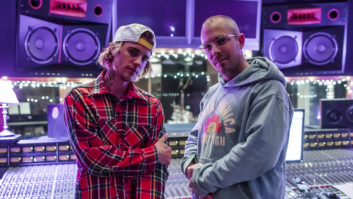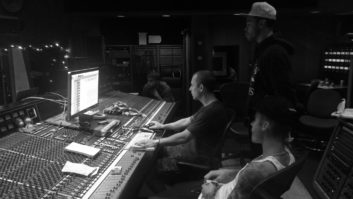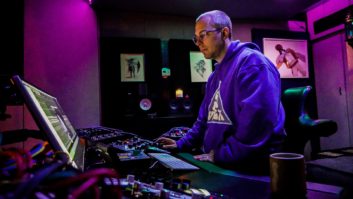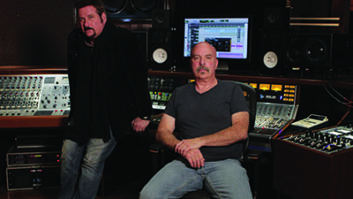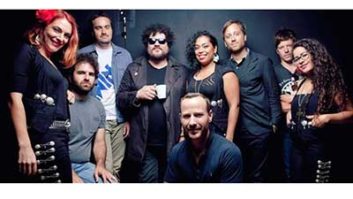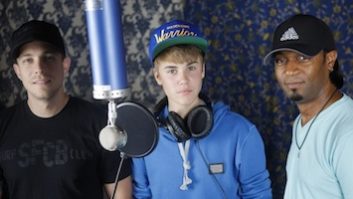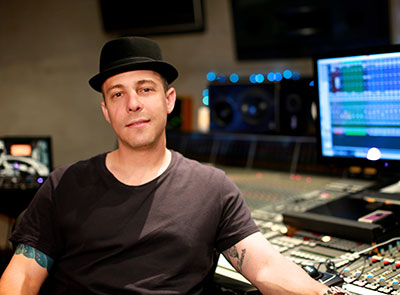
For the many questionable statements and actions Justin Bieber has made over the course of his 22 years, he has solely carried the blame. When it comes to an album as credible as Bieber’s most recent release, Purpose, the maligned pop artist is given very little, if any, credit.
Released November 2015, Purpose is Bieber’s sixth million-plus selling album. Purpose broke Spotify records the week of its release with 205 million global streams. Thus far, the album has generated three Number One singles on Billboard’s The Hot 100 chart: “What Do You Mean,” “Love Yourself,” and “Sorry”—the first ones for Bieber in the U.S. And his first Grammy (Best Dance Recording) for “Where Are Ü Now,” his collaboration with Diplo and Skrillex as Jack Ü, is included on Purpose (Deluxe).
Purpose, as with much pop today, is a Frankenstein construction that has close to 100 creative individuals involved in its design. If Bieber is the navigator of Purpose, then Josh Gudwin is the driver—who without direction would be at a standstill. Gudwin is one of the go-to guys in the pop business. Talented and experienced, he has expertise in numerous facets of producing music, from engineering and vocal production to composing and mixing. Gudwin’s roster of credits includes Rihanna, Jennifer Lopez, Bibi Bourelly, Rita Ora, Celine Dion, Jamie Foxx, Cher, Carly Rae Jepsen, Cody Simpson, Keyshia Cole, and Mary J. Blige, among others.
Gudwin’s relationship with Bieber began in 2010 when he was working with Kuk Harrell on My Worlds Acoustic. At Bieber’s request, Gudwin joined him on the road during the Believe tour to record Believe Acoustic. “It’s like playing a videogame,” says Gudwin of Bieber’s growth as an artist. “You go levels and levels up. You learn a lot about yourself. You learn what you like and don’t like in the studio. He has had a lot of experiences in both life and work. He put the time in. He’s cut hundreds of records since Believe.”
Gudwin and Bieber worked on Purpose for more than two years. When “Where Are Ü Now” garnered a positive reception, it gave Bieber the freedom to do music that was more for him than what was expected of him. To this end, Gudwin collects beats, chord progressions, guitar progressions, piano progressions, song ideas, from various producers that he knows Bieber will like. When Bieber is ready to write, he’ll come to Gudwin, give him an idea of what he’s feeling, and Gudwin will pull from what he has collected, finding precisely what matches Bieber’s idea.
“When I first started working with [Bieber], he would ask me for stuff and I would find it because he was asking,” says Gudwin from Los Angeles, sitting in Record Plant’s self-contained SSL3 Studio, where the majority of Purpose was recorded and where he spent approximately 100 days of 2015. He also spent some time at Henson Studios in L.A. and Jungle City in New York City. “That naturally progressed into me being proactive—learning what he liked, learning what he didn’t like, finding what he was looking for before being asked for it, and learning how to wait for the right time to play him something. That turned into different jobs: vocal engineering, composing, producing, writing, mixing and A&R.”
To get the best performance out of Bieber, Gudwin makes sure there are no extraneous individuals in the room, and certainly no one that Bieber doesn’t know personally. He makes sure that he leaves his own baggage and worries outside the door. And he doesn’t push. Bieber comes in to cut when he’s ready. The only times Gudwin asks for a redo on a vocal is when he is sounding nasally or sharp. Bieber himself has a very good idea of what he needs to do and has a good understanding of when he’s done his best and when he hasn’t. Most of the songs on Purpose have been recut up to three or four times.
Gudwin has a few microphones he likes to use with Bieber: Sony C-800G, Telefunken ELA M 251 and Neumann U 67, in particular. The three are bright microphones, appropriate for a pop performance. The Sony is the main microphone unless it’s making the vocal too sharp or too thin. It tends to accentuate the vocalist’s tone, Gudwin says, so when Bieber is sounding angelic, it works best. If he’s sounding nasally, the 251 is put up, and if he’s sounding thin, the 67 is used.
“If he’s sounding thin, pulling down some of the mids will make him sound thicker and losing some of the low-mids will make him sound bigger,” says Gudwin, whose vocal chain is whichever microphone into a Neve 1081 or 1073 preamp, then usually into the Tube-Tech CL 1B compressor and then a GML 8200 or 2032 EQ. The latter Gudwin has in place in case he doesn’t have time to switch microphones, so he can fix what he needs to in the control room.
Says Gudwin, “I go over every line, every syllable, make sure the timing is right, make sure the pocket is right, make sure the notes aren’t under or over. I work in Pro Tools using a lot of Universal Audio plug-ins like the LA-2A and 1176.”
Gudwin takes maximum advantage of Pro Tools’ capabilities to format the delays and effects on vocals. To create definition in the vocal, Gudwin picks certain words within a line or a whole line to pull up to the track he has dedicated to delay or the reverb burst with the mix knob turned all the way up. Here he treats it like a vocal track with its own EQ and compression, to have it sound different than the rest of the vocal, making it more easily digestible by the listener’s brain. His actions create movement and tempo. If there is a gap in the vocal, instead of the hi-hat keeping the tempo, the vocal delay or reverb spell might do that.

Gudwin at Record Plant, with Justin Bieber on vocals.
“On a delay, if you have the mix all the way to wet, then the audio region will not play until it is delayed,” Gudwin demonstrates on Pro Tools using the word “movie” from the song “I’ll Show You.” “I copy it up, drag it to my quarter-note, clean it up, fade in and out, and that’s the only word that gets played. Same with dedicated delay tracks, I’ll put a reverb fully wet, and if I want it to sound like he sang that word in the Grand Canyon to get that feeling of emptiness, I can do the same with reverb effects. It’s the same principal as what dub guys do to dub out certain words, just a different way to do it. When you’re mixing on a console, you have to automate auxes on and off for whichever words you want thrown. It’s a tedious process. In Pro Tools I have ultimate control.”
Gudwin starts a rough mix and edit as soon as he is done capturing the vocal—sometimes getting started while Bieber is still in the booth as the singer wants to hear the vocal as soon as he steps into the control room, making the decision on the spot if he wants to do more. If he’s happy, Gudwin will start mixing the vocal into the song right there. When Bieber leaves the studio, Gudwin expects a call from him about 10 minutes later, asking if the mix is ready, and another call 10 minutes after that, until Gudwin sends him the rough mix. This practice inadvertently led to Gudwin being the principal mixer on Purpose. On the Deluxe version, Gudwin mixed four songs solo, seven tag teaming with Andrew Wuepper, one with Jaycen Joshua (who did another two on his own), Manny Marroquin did three, and Skrillex and Diplo did one.
“That initial rough mix sets the vibe for the feeling of the record all the way to the end,” says Gudwin. “[Bieber] has listened to a song 150 times in the rough mix form. If we send that to a mixer and they change that feeling, to [Bieber] it’s immediately wrong. My rough mix, I’m cleaning up and making space for things. I’m carving, I’m adding, I’m replacing the reverb with better reverb, I’m making sure nothing’s too sharp or bulky. I’m trying to up the level of everything in the song sonically. I’m also making sure it translates to as many speakers as I can. I’m more of an emotional mixer than a technical one. I can make you feel a certain way listening to a song.”
Gudwin’s mixes are halfway to the master. When he sends material to the mastering engineering, he’s offering them the choice of having his light master or no master. Much like with the mix, if the master comes back too different, Bieber is going to reject it as sounding wrong.
“Ultimately, [Bieber] is fully accountable on Purpose,” says Gudwin, “This whole album, if there is a mistake on it, it will be his fault. And if there is success on it, it’s because he put the time in on his own part to make it successful. We put a lot of love and care into Purpose. Me, I’m just trying to capture the vibe.”
JOSH GUDWIN’S MOBILE RIG
- MacBook Pro
- Sonnet Echo Express HD3 Expansion chassis with HDX and (2) UAD cards
- Apogee Symphony 16 I/O
- (2) Neve 1073 preamp
- Tube-Tech CL1B compressor
- Sony C-800G microphone
- GML 2032 EQ
